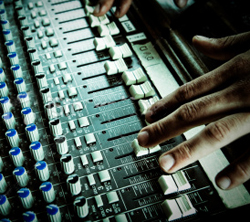“The needs of the many outweigh the needs of the few or the one.” – Dr. Spock (Star Trek).
So it was that I received an email asking me this question; “Is it acceptable to cut/pull back certain instruments when their sound doesn’t fit well with the rest of the group?”
Before I go any further, I should note the question wasn’t clear as to why the sound doesn’t fit.
Therefore, I’ve decided to cover this subject in two ways, first by looking at the purpose of our work and second by looking at the reasons a sound might need to be cut and what you can do about it.
The purpose
Let’s start by asking this question: what’s the purpose of audio production in the church, specifically mixing worship music?
The purpose is to create an environment in which the people in the congregation can fully worship God. This leads into proper volume levels, vocal clarity, and naturally creating the proper mix of instruments and vocals as you create (mix) worship music. The sound board is a musical instrument when you think about it.
What’s the purpose of the musicians? It’s not to worship for themselves. The purpose of the musicians is to create worship music for the congregation to use as a means of worship, whether it’s singing along with the band or listening to the music as they prayer or listen to the words.
Our combined purpose is ministering to the congregation so they can worship Him.
Keeping this purpose in mind, WHEN is it OK to pull back on an instrument or a vocal for the benefit of the mix?
There is the normal amount of song-to-song changes where you pull back on the guitars and boost the piano because it’s the lead instrument for a song. That’s perfectly OK and part of being a good mixer. But, that’s not what I’m addressing.
Why does it sound bad?
There are two reasons an instrument, let’s say the piano, could sound bad in a mix. Either the instrument is being played poorly or the sound tech doesn’t have it mixed right for the song.
Let’s start by addressing the latter. Electronic keyboards have a place in a contemporary worship band.
However, they can be hard to mix. Sometimes a keyboard pad or voicing can add a lot of complexity that makes it hard to place in your mix.
If you are having trouble mixing in a pad, does it mean you should remove it from the mix? No. You might pull it back a *little* in the mix but it does need to be there. Take it as an opportunity to focus on tweaking only the keyboard during that song.
Then comes the other possibility…the instrument is being played poorly. Why? An instrument is played poorly for one of two reasons; inexperienced musician or bad monitor mix.
For example, I’ve had times when the sound check was great and monitors were good but once the service started and the band was playing, I could tell a guitarist was off on when they were nervously making chord changes. So I bumped up their monitor volume and they started playing confidently and correctly again.





















